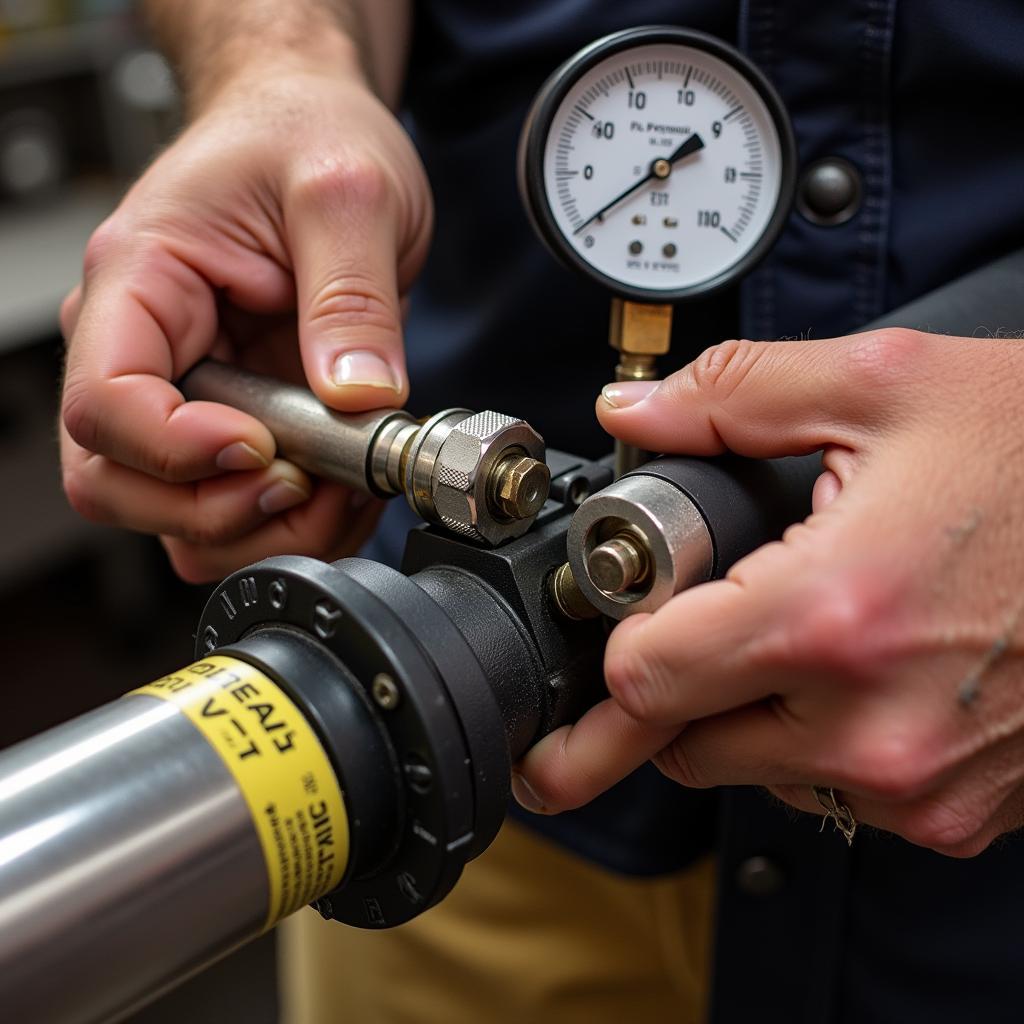Extrication Tool Care is crucial for ensuring the effectiveness and longevity of these vital pieces of equipment. Proper maintenance not only maximizes the tool’s lifespan but also guarantees their reliability when every second counts in a rescue situation. Neglecting regular maintenance can lead to malfunctions, compromising rescuer and victim safety. Let’s delve into the essentials of extrication tool care.
Why Extrication Tool Care Matters
Extrication tools, including hydraulic cutters, spreaders, and rams, are subjected to immense pressure and stress during operation. Regular extrication tool care ensures these tools perform optimally when needed. This meticulous upkeep not only preserves the equipment’s functionality but also safeguards the lives of both rescuers and victims. Imagine the consequences of a spreader failing mid-operation – it’s a scenario we must avoid at all costs. Proper care also translates into cost savings by preventing premature replacements and reducing repair expenses.
Essential Steps in Extrication Tool Care
Proper extrication tool care involves a systematic approach. After each use, tools should be thoroughly cleaned to remove debris, blood, and other contaminants. This not only prevents corrosion but also ensures accurate inspections. Speaking of inspections, regular checks for damage, leaks, and wear are paramount. Lubrication is another critical aspect. Applying the correct lubricant to moving parts minimizes friction, extending the tool’s lifespan.
Cleaning Your Extrication Tools: A Step-by-Step Guide
- Remove loose debris: Use a brush or compressed air to remove dirt, dust, and larger particles.
- Wash with mild detergent: Use a mild detergent and water solution to clean the tool’s surface. Avoid harsh chemicals that can damage the finish.
- Rinse thoroughly: Rinse the tool with clean water to remove any remaining detergent residue.
- Dry completely: Dry the tool completely with a clean cloth to prevent rust and corrosion.
 Hydraulic Rescue Tool Inspection
Hydraulic Rescue Tool Inspection
Inspection and Lubrication: Ensuring Optimal Performance
Regular inspection goes beyond just a visual check. It involves examining hydraulic lines for leaks, checking the cutter blades for sharpness, and ensuring all moving parts function smoothly. Lubrication should be done according to the manufacturer’s recommendations, using the specified lubricant. Don’t underestimate the power of a well-lubricated tool – it’s the difference between a smooth operation and a struggle.
Storing Your Extrication Tools: Protecting Your Investment
How you store your extrication tools significantly impacts their longevity. They should be stored in a clean, dry environment, away from extreme temperatures and humidity. Ideally, they should be kept in designated storage cases or compartments within the rescue vehicle. Ever walked into a disorganized rescue vehicle? Proper storage not only protects the tools but also streamlines the rescue process.
 Extrication Tool Storage in a Rescue Vehicle
Extrication Tool Storage in a Rescue Vehicle
Training and Expertise: The Human Factor in Extrication Tool Care
Even the best-maintained tools are useless without trained personnel. Regular training on proper tool use, maintenance, and safety procedures is crucial. Think of it like a surgeon and their scalpel – skill and precision are essential. John Smith, a veteran firefighter and extrication expert, emphasizes, “Regular training is not just a recommendation, it’s a necessity. It ensures rescuers can use these powerful tools effectively and safely.” Another expert, Maria Garcia, a lead instructor at a national fire academy, adds, “Proper tool care extends the life of the equipment, saving departments valuable resources in the long run.” This sentiment is echoed throughout the rescue community.
Conclusion
Extrication tool care is not merely a routine task; it’s a commitment to readiness, safety, and efficiency. By adhering to proper cleaning, inspection, lubrication, and storage practices, we ensure these lifesaving tools are always ready to perform when needed most. Remember, extrication tool care is an investment in saving lives.
FAQs
- How often should extrication tools be inspected? Ideally, after each use and at least monthly.
- What type of lubricant should be used? Always consult the manufacturer’s recommendations.
- What are the signs of a damaged hydraulic line? Leaks, bulges, and cracks are all indicators of damage.
- How should extrication tools be stored? In a clean, dry environment, preferably in designated storage cases.
- Where can I find training on extrication tool care? Contact your local fire department or rescue training center.
- What is the importance of cleaning extrication tools? Cleaning prevents corrosion and allows for accurate inspections.
- Why is extrication tool care so vital? It ensures the tools are ready to perform when needed, safeguarding both rescuers and victims.
Do you have any other questions? Check out our articles on tool to open train car doors, car extrication tools, and rescue tool rep cut guy out of car for more information.
For immediate assistance with your car diagnostic needs, contact us via WhatsApp: +1(641)206-8880, Email: [email protected] or visit us at 910 Cedar Lane, Chicago, IL 60605, USA. Our customer support team is available 24/7.

Leave a Reply